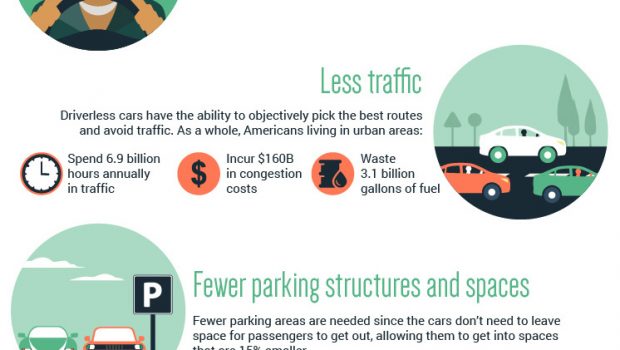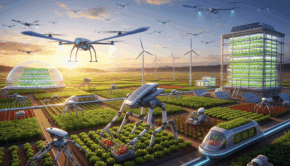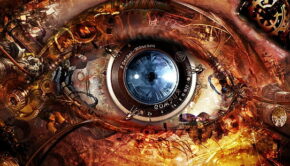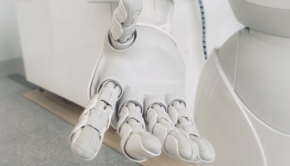The Future of Driving [Infographic]
Most of the cars we use already have at least one form of driverless technology such as cruise control which was patented in 1950. Americans are embracing other semi-autonomous vehicle technology as well. Forty-one percent of drivers want a lane departure warning or lane assist feature and 39 percent want automatic emergency braking in their next vehicle. With the amount of highway vehicles and licensed drivers increasing, benefits of driverless vehicle technology is creating excitement across the U.S as many car manufacturers create pilot programs.
The driverless car uses maps and sensors to determine its location and the best route to destinations. The car’s software predicts movement patterns based on the objects nearby and then chooses speed based on those predictions. The sensors can detect objects more than 200 yards away in all directions based on size, shape and movement patterns.
The Google driverless prototype is sporting lasers, sensors and cameras to detect objects in all directions plus a rounded exterior designed to give the best field of view to the sensors. The vehicle has an interior designed for riding instead of driving and is being powered by electric batteries. There are also back-up systems in the vehicle for steering, braking and computing.
There are several benefits to the use of driverless cars. One benefit is decreasing accidents by 90 percent which can eliminate drunk and distracted driving accident risks. Driverless cars will be programmed for maximum deductions in emissions. Another benefit of driverless cars is the reduction in traffic. With vehicles able to objectively choose the best routes, Americans in urban areas will no longer lose 6.9 billion hours annually in traffic or waste 3.1 billion gallons of fuel.
Driverless cars will also have an impact on public transportation. In 2015, there were 10.6 billion trips taken with 62,449 public transportation vehicles. This technology will need fewer vehicles meaning the 13,000 taxicab fleet in Manhattan can be replaced with 9,000 driverless cars. The wait times will also shorten from five minutes to just 36 seconds and fares will be lowered too.
While the technology is not quite ready for mass production, because inclement weather such as falling snow and rain interferes with the sensors. There are predictions being made on the future of driverless cars. These predictions are by 2030 the mainstream population will have adopted driverless cars and by 2050 these vehicles will be the main mode of transportation.
To learn more about the future of driverless cars, check out Ohio University’s online Master of Science in Civil Engineering degree program.
















